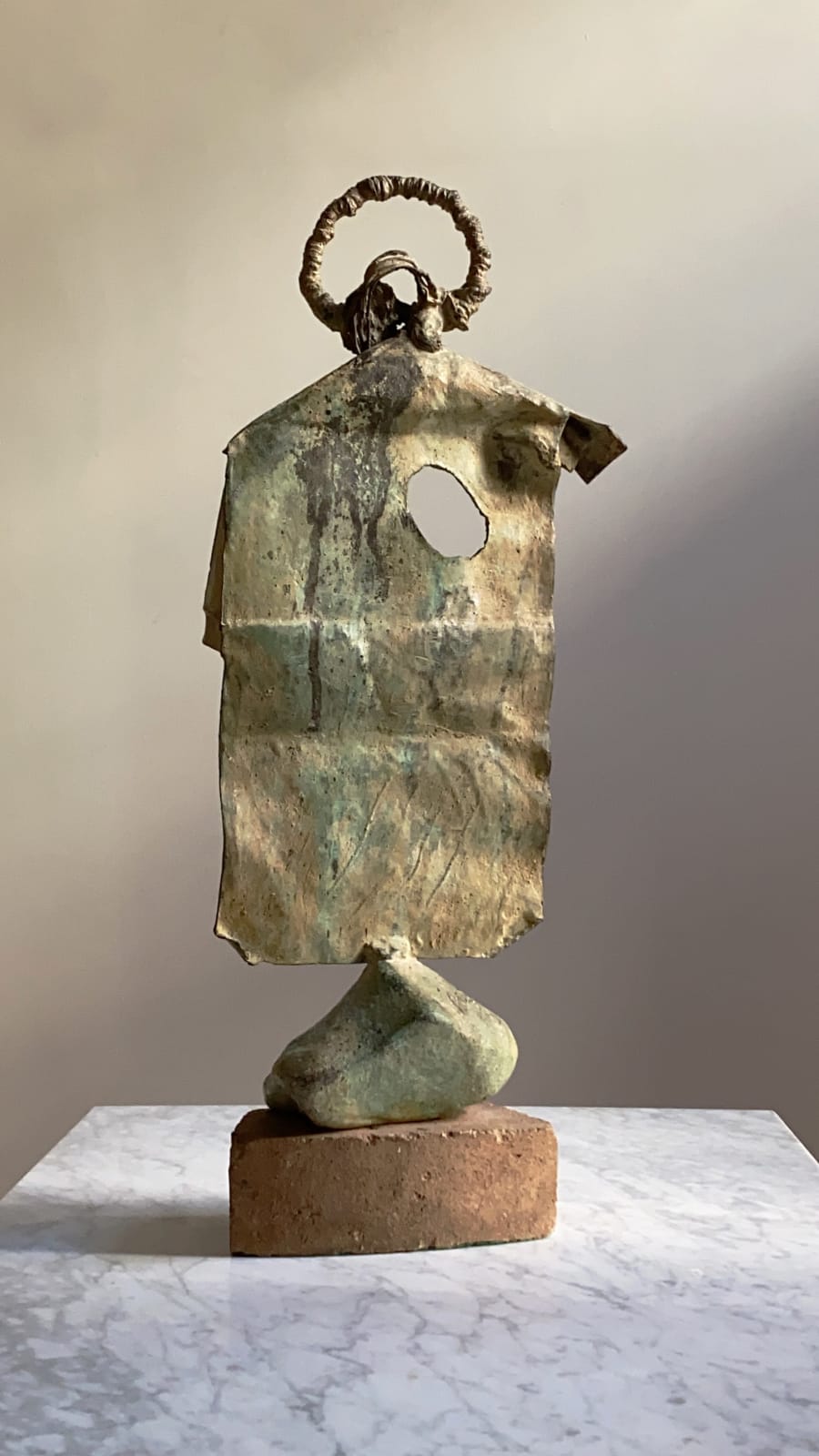Joan Miró
height 70.2 cm
In 1956, Joan Miró moved to a new studio in Mallorca. The new space, designed by Josep Lliús Sert, allowed the artist, for the first time, to gather his entire body of work into one place. He now had his works at hand for memories and inspiration. He could rethink his previous artistic experience and develop a new, more personal language for himself, unconstrained by the historiographies and artistic hierarchies which sought to encase him in a more static interpretation of his art.
“The starting point for [Miró’s] work at this time was an accident for fortuitous motif—something as simple as a smudge, a drop of paint, a fingerprint, a found object or something from nature—which became the initial push towards re-creating a common subject in his work: the representation of nature and the human figure. Miró goes beyond reality as a referent in order to transmute it into material and signs, constructing an essential symbiotic language that he uses to solve visual problems.” (C. Fernández Aparicio & B. Galán Martin, Miró: The Experience of Seeing, Late Works, 1963-1981, 2014, p. 9).
Starting in the 1950s, Miró began making visits to the Artigas studios, which were situated in the country outside of Barcelona. Surrounded by nature and the elemental materials of stone, earth, and clay, the capricious unpredictability of the wood-burning kilns there were a source of magic to Miró: the results of firing would always be a mystery until the emergence from the kilns, which could not be temperature controlled as with gas or electric versions.
These kilns would inspire the artist, who would model in ceramic and then cast bronze versions of objects found in his studio. These bronzes, however, were not mere representations of reality, but fantastical flights of fancy, or as he deemed them “living monsters.” These sculptures allowed him to probe the enduring fascination of these studio objects, some of which he had carried with him since the 1920s while also developing his own, unique series of work.



